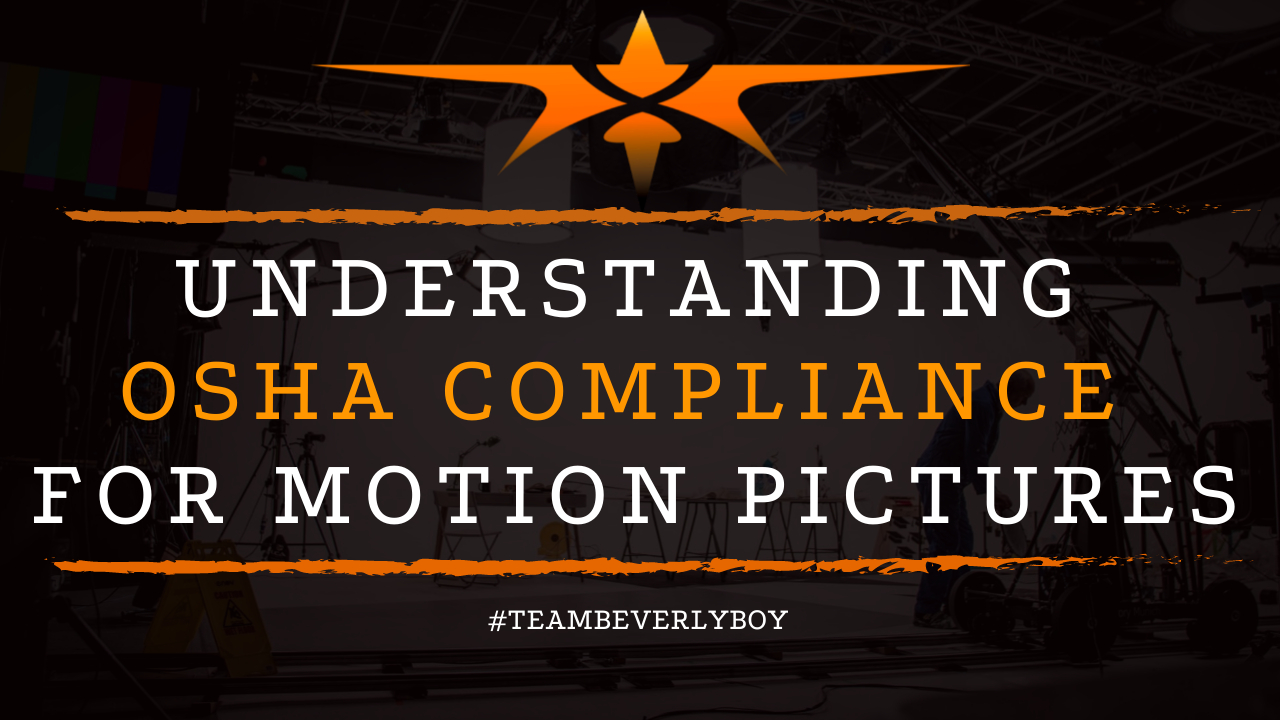
Understanding OSHA Compliance for Motion Pictures
The Occupational Safety and Hazards Administration (OSHA) protects workers from job related incidents. By employing various standards and compliance regulations throughout each industry including the film industry. OSHA compliance for motion pictures and the standards for operating a film production on set, in studio, and on location are important for all film producers to follow.

Failure to adhere to OSHA standards, and maintain compliance with OSHA regulations can result in a variety of repercussions. Including civil fines, lawsuits, and potentially have the business shut down. Until the area is brought into compliance.
OSHA General Industry Set Regulations
OSHA compliance for motion pictures has brought an increased level of safety and security for workers on film sets. Before OSHA general industry set regulations were employed.
Many film sets were incredibly dangerous and the number of work-related incidents. Including accidents resulting in significantly higher personal injury. Modern set builds, and increased OSHA regulation has made working in the film industry a safer choice.
Film producers have to take action. To ensure that film sets and studios are safe for workers. Including both cast and crew.
In fact, OSHA standards and regulations have resulted in filmmakers taking fewer shortcuts on the set. Resulting in a significantly safer workplace for cast and crew.
OSHA Requirements for Film Sets
In order for filmmakers to stay within OSHA compliance for motion pictures they must adhere to certain practices when it comes to the film set. Film sets must not have hazards such as open wires or trip hazards.
Film lighting must meet standards to ensure protections of workers that are traveling between areas of the set.
Most film sets will have a Safety Supervisor in charge of:
- Performing regular hazard checks to ensure there are no potential hazards with locations, setups, or the set itself.
- Risk evaluations to determine the potential for a hazard and a repair to prevent or mitigate risks.
- Initiation of safety measures to ensure crew members, and cast, remain safe and have limited risks while working on the set.
Set Safety
OSHA standards for film sets require that all equipment be secure. And that heavy equipment and electrical cords be intact. To prevent tripping, all cords must use cable path tape or rubber matting overtop so as to prevent tripping.
Yellow Jackets also have the purpose of securing cords to the ground. Further preventing them from becoming a potential hazard on set.
The Takeaway
In areas where building is taking place, OSHA compliance for motion pictures will require that crew members wear hard hats and steel toe boots for protection. Further, those without immediate involvement in the build will be kept out of the area to ensure they are not at risk.
The goal of OSHA compliance for motion pictures is that workers, cast and crew members, are safe while on the job. Following OSHA compliance standards on the set, in the studio, and on location will not only reduce the frequency of accidents or injury on set.
But will also prevent the filmmaker from facing potential civil code violations, penalties, or other compliance issues. It’s all part of maintaining health, safety, and security on the film set.



